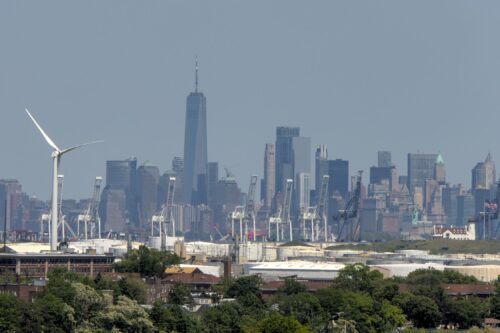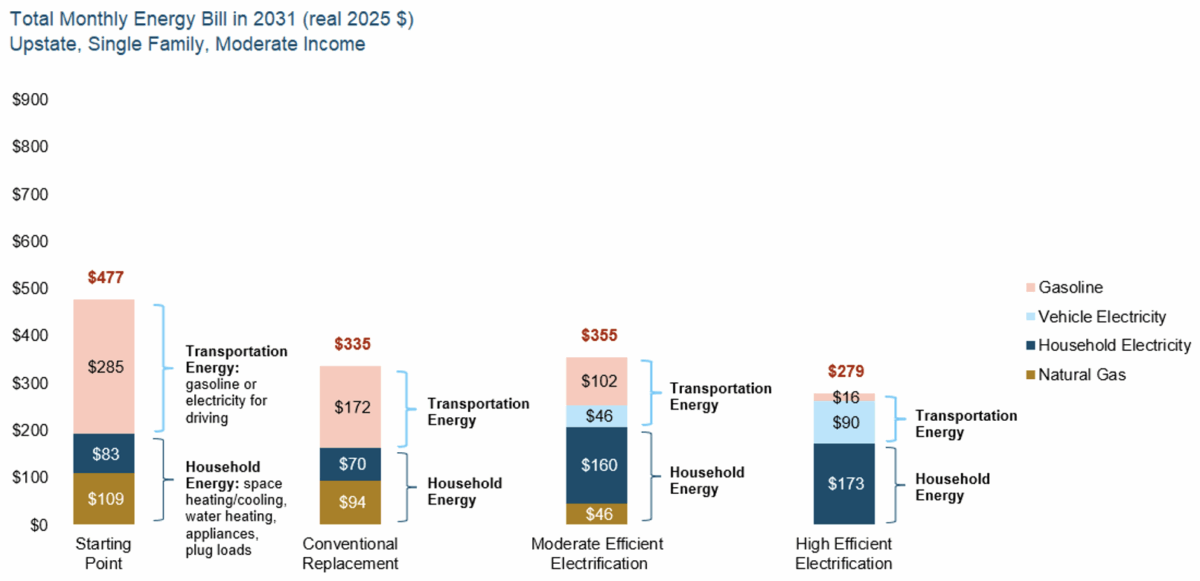
New York’s State Energy Planning Board recently reached a significant milestone, approving the state’s 2025 Draft Energy Plan – a comprehensive, multi-sector assessment of the state’s future energy system needs through 2040. The Energy Plan will guide New York in energy-related decision-making to support decarbonization of the state’s economy, ensure system reliability, and balance affordability, equity, and economic development objectives.
E3 is proud to have supported the New York State Energy Research and Development Authority (NYSERDA) across multiple facets of this important effort. E3’s work included three primary areas:
- Pathways Analysis | E3 examined multiple energy system futures in New York State, highlighting the challenges and opportunities of economy-wide decarbonization. This involved modeling how different pathways (including “Current Policies,” “Additional Action,” and “Net Zero” scenarios) would shape the entire New York State economy, paired with a detailed representation of the electricity sector. End use consumption by fuel type is shown in Figure 1 below.
- Energy Affordability Analysis | E3 constructed an energy affordability framework to evaluate household and transportation energy costs for various household profiles, including variations in technology adoption, income levels, and geography. For each household profile, future household and transportation energy expenditures are calculated for four illustrative journeys involving different technology mixes and fuel types to understand the impacts of different pathways on energy affordability outcomes.
- Transmission and Distribution System Reliability Analysis | In collaboration with GE Vernova, E3 developed an extensive report summarizing the state of electric system reliability in New York. This report documents key processes and methodologies used to examine system reliability today, as well as emerging issues and key risk factors that may impact system reliability in the future.

Key findings include:
- Across all pathways, the expansion of building electrification, electric transportation, and new large loads will significantly increase New York’s electricity demand. By 2040, annual demand is projected to rise by approximately 25% relative to today’s levels in the core planning scenario. Rapid load growth is projected to introduce new challenges for system reliability, and the T&D Reliability Report outlines ways in which system planning approaches are also evolving to respond to heightened uncertainty.
- Meeting this growing electricity load while maintaining system reliability will require investments to expand the electricity system. In the core planning scenario, additions of renewable energy and battery storage are foundational to decarbonization. By 2040, 35 GW of solar and 9 GW each of storage, offshore wind, and onshore wind are projected to be added to New York’s generation mix, as shown in Figure 2. Reliably integrating these large quantities of renewable energy into the electricity system will require a portfolio capable of balancing system needs over multiple timescales, from managing sub-hourly and hourly variability to providing power during multi-day periods of low renewable output.
- While the electricity system is expected to grow in all scenarios, the future of New York’s gas system is pathway-dependent. In the Current Policies and Additional Action cases, total residential and commercial gas consumption falls by 16-22% relative to today’s levels. Overall, in these planning scenarios, final energy served by electricity increases from 19% in 2025 to 28-29% in 2040, and final energy served by direct fossil fuel consumption decreases from 78% in 2025 to 63-67% in 2040.
- Energy saving measures, such as weatherization and building envelope efficiency, efficient appliances and equipment, fuel-efficient and electric vehicles, and transit use, can lower overall household and transportation energy costs. Many households pursuing these measures are likely to see gradually declining levels of energy consumption and operating costs in real dollar terms over time due to the combined impacts of adopting more efficient equipment. However, the nature and extent of these cost savings differ by household profile, with dynamics that vary across regions, building types, and income levels. E3 performed a detailed examination of representative household types, but it is important to note that the actual savings and energy costs will vary depending on the unique circumstances of the household when pursuing energy efficiency and electrification projects. These factors include existing fuel type (e.g., fuel oil vs. natural gas), building envelope and insulation, home size and occupancy, type of home (e.g., single-family vs. multi-family), efficiency of existing and new equipment, extent of equipment replacement, and usage of equipment. A visualization of bill impacts for one representative household type is provided in Figure 3.
New York’s 2025 Draft Energy Plan provides clarity on how the state can effectively manage significant shifts in energy demand, the deployment of renewable resources, and ongoing affordability and reliability challenges. As New York transitions to a cleaner energy system, informed and strategic investments will be critical. E3’s analyses highlight the specific choices and trade-offs that policymakers and stakeholders face, helping to align near-term decisions with long-term objectives. E3 looks forward to continuing to support New York State in the development of the Final Energy Plan, which will further examine rapidly changing dynamics across the energy sector, including the impacts of federal policy changes.

Figure 2. Total Installed Capacity – Additional Action (left) vs Constrained Build Sensitivity (right). 
Figure 3. Total monthly household energy and transportation energy expenditures. Upstate, Single Family, Moderate Income, Natural Gas, 2031 (real 2025 $).


